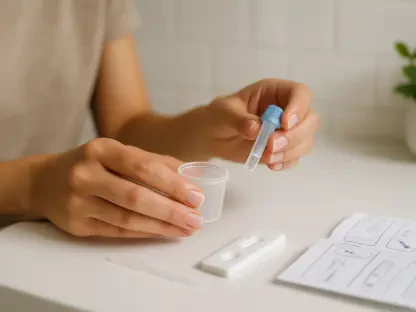What happens when a long-awaited solution to a debilitating disease turns into a potential threat? In a stunning turn of events, the U.S. Food and Drug Administration (FDA) has suspended the license of Ixchiq, the first chikungunya vaccine approved in the U.S., developed by Valneva, a France-based pharmaceutical company. Chikungunya, a mosquito-borne virus rampant in tropical regions, cripples millions with fever and severe joint pain, often leaving lasting damage. Hailed as a game-changer, Ixchiq promised protection for vulnerable populations—until alarming reports of serious adverse events, including deaths, shifted the narrative. This suspension raises urgent questions about balancing innovation with safety in the fight against emerging diseases.
The significance of this development cannot be overstated. Chikungunya poses a growing threat as climate change and global travel expand the reach of mosquito-borne illnesses into new territories, including parts of the U.S. With no specific treatment available, a vaccine like Ixchiq represented hope for millions in endemic areas of Africa, Asia, and the Americas. Yet, the FDA’s decision underscores a critical reality: even pioneering medical advancements must prioritize patient safety above all. This story delves into the unraveling of Ixchiq’s promise, the specific risks that led to its suspension, and the broader implications for public health and vaccine development.
A Shocking Setback for a Pioneering Vaccine
The journey of Ixchiq began with triumph when it secured accelerated FDA approval in late 2023, marking a historic milestone as the first vaccine to combat chikungunya in the U.S. Administered as a single intramuscular injection, this live-attenuated vaccine—using a weakened version of the virus—offered a shield against a disease notorious for its debilitating effects. Health experts celebrated its potential to protect at-risk communities, particularly in regions where outbreaks are frequent.
However, the optimism surrounding Ixchiq took a dark turn by early 2024. Reports of severe adverse reactions began surfacing, casting doubt on its safety profile. The FDA, tasked with safeguarding public health, faced mounting pressure as these incidents accumulated, ultimately leading to a full suspension of the vaccine’s license. This abrupt halt has left stakeholders—from healthcare providers to patients—grappling with uncertainty about the future of chikungunya prevention in the U.S.
The Growing Threat of Chikungunya and the Need for Solutions
Chikungunya is not a distant problem confined to far-off tropics; it is a real and expanding danger. Transmitted by Aedes mosquitoes, the virus causes high fever, headaches, and excruciating joint pain that can persist for months or even years in some cases. According to the World Health Organization, over 1 million cases are reported annually, predominantly in Africa, Asia, and the Americas, with sporadic outbreaks reaching southern U.S. states like Florida and Texas.
The urgency for a vaccine has never been clearer as warming climates enable mosquitoes to thrive in new regions. Ixchiq’s development was seen as a critical step toward curbing this public health challenge, especially for travelers and residents in high-risk zones. Its suspension, therefore, is not just a setback for Valneva but a blow to global efforts to manage a disease that lacks effective preventive tools beyond basic mosquito control measures.
Inside the FDA’s Decision: Alarming Safety Signals
The FDA’s suspension of Ixchiq stems from a series of troubling reports that could not be ignored. Starting in spring 2024, 17 serious adverse events were documented globally among elderly recipients aged 60 and older, including two fatalities. These cases often mimicked severe chikungunya symptoms, requiring hospitalization for many affected individuals, which raised red flags about the vaccine’s risk profile.
Despite a temporary pause and subsequent label warnings for those over 65, the situation escalated with four additional adverse events reported outside the U.S. recently. These incidents, involving individuals aged 55 to 82, included one hospitalization and mirrored the earlier pattern of chikungunya-like illness. With over 20 serious events, 21 hospitalizations, and three deaths now linked to Ixchiq, the FDA’s Center for Biologics Evaluation and Research concluded that the risks currently outweigh the benefits, especially since post-marketing studies to confirm clinical efficacy remain incomplete.
Expert Perspectives and Valneva’s Standpoint
The FDA has been unequivocal in its reasoning, with a spokesperson from the Center for Biologics Evaluation and Research stating, “Public safety is paramount, and emerging risks must be addressed decisively, even for vaccines targeting critical health threats.” This stance reflects a cautious approach, prioritizing thorough investigation over rapid deployment in the face of uncertainty. The agency’s actions highlight the complexities of approving biologics under accelerated pathways when real-world data reveals unexpected challenges.
Valneva, on the other hand, has acknowledged the known risks, particularly among older adults, which were already noted in clinical trials and product labeling. A company representative emphasized, “These recent events align with documented vulnerabilities in certain populations, and a full investigation is underway in collaboration with regulators.” Despite the U.S. suspension, Ixchiq remains available in markets like the European Union, Canada, the United Kingdom, and Brazil, where demand persists in chikungunya-endemic areas.
Adding depth to the discourse, vaccine experts point to the inherent challenges of live-attenuated vaccines, which can provoke stronger immune responses but also carry higher risks of adverse effects. A prominent immunologist noted that such vaccines often face intense scrutiny, especially when targeting diseases with limited prior immunization frameworks. This expert input underscores the delicate balance between innovation and safety that regulators must navigate.
Moving Forward: Guidance for Patients and Providers
For healthcare providers and patients in the U.S., the suspension of Ixchiq necessitates immediate adjustments. Those who have already received the vaccine are advised to remain vigilant for symptoms such as fever or joint pain and to report any concerns promptly to medical authorities. The FDA has established channels for adverse event reporting to ensure comprehensive monitoring as investigations continue.
Travelers and residents in chikungunya-prone areas must now rely on alternative prevention strategies, such as using insect repellents, wearing protective clothing, and eliminating mosquito breeding sites. Additionally, the recent FDA approval of Vimkunya, a chikungunya vaccine by Bavarian Nordic, offers a new option for those seeking protection. Health officials encourage staying updated on guidance from the Centers for Disease Control and Prevention regarding safe travel and disease prevention.
The broader impact on vaccine development is also worth considering. This incident serves as a reminder of the importance of robust post-marketing surveillance to detect rare but serious risks. For Valneva, collaboration with the FDA remains crucial to address safety concerns and potentially restore Ixchiq’s standing in the U.S. market. Public health advocates stress the need for transparent communication to maintain trust in vaccination programs amidst such setbacks.
Reflecting on a Cautionary Chapter
Looking back, the suspension of Ixchiq marked a sobering moment in the quest to combat chikungunya, revealing the unpredictable challenges of introducing novel vaccines. The FDA’s decisive action, driven by mounting evidence of serious adverse events, prioritized patient safety over the urgent need for a preventive tool. Valneva’s commitment to investigating these incidents, while maintaining the vaccine’s availability in other regions, highlighted the global stakes involved.
As this chapter unfolded, it became clear that the path forward demanded rigorous studies to confirm Ixchiq’s benefits and mitigate its risks, especially for vulnerable populations. Stakeholders were urged to support enhanced surveillance systems to catch potential issues early in future vaccine rollouts. Moreover, the emergence of alternative options like Vimkunya provided a lifeline, ensuring that the fight against chikungunya did not stall entirely. This episode ultimately served as a call to refine the balance between innovation and caution, paving the way for safer solutions in the ongoing battle against emerging infectious diseases.









